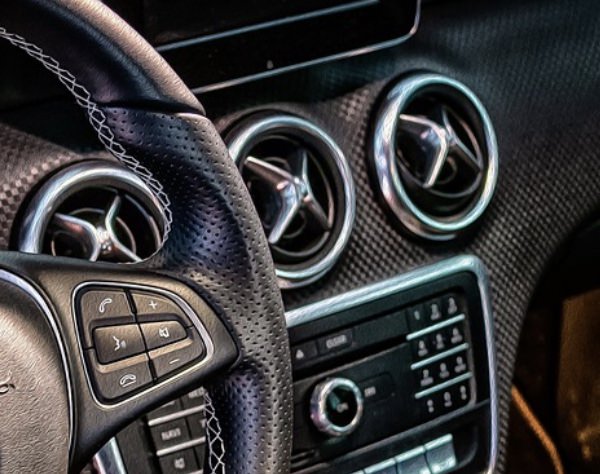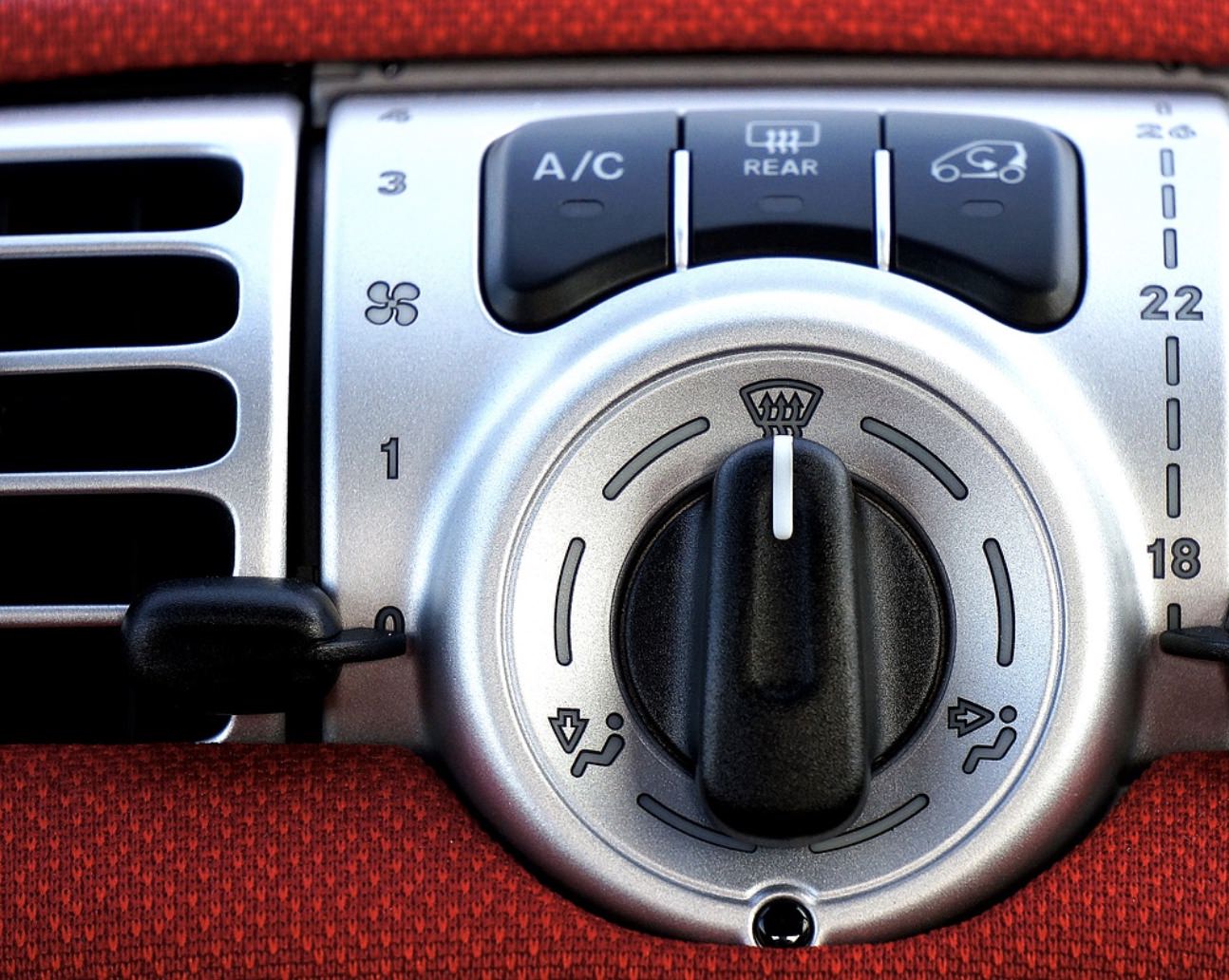Top Reasons Your Car Air Conditioner Doesn’t Work
 A car air conditioner is not something most drivers think about on a regular basis. It’s usually just there, doing its job and keeping you cool when you need it. However, if your car’s AC system isn’t working properly, you’ll pretty much know immediately and like many of us, you won’t be happy about it.
A car air conditioner is not something most drivers think about on a regular basis. It’s usually just there, doing its job and keeping you cool when you need it. However, if your car’s AC system isn’t working properly, you’ll pretty much know immediately and like many of us, you won’t be happy about it.
The good news is that there are several common reasons why your AC might be broken or malfunctioning.
Signs to Check
There are many reasons why your car air conditioner might stop working. Maybe it’s something simple; maybe it’s something more serious. Your mechanic will be able to find out exactly what the problem is.
Here are signs your A/C may not be working:
- Your car makes a loud noise when you turn on the AC
- The temperature in your car doesn’t change, even though you have turned on the AC
- You notice that your outside vents don’t blow cold air, even though they still blow warm/hot air
Continue ready to discover some of the most common reasons.
Recycling Switch Could Be Off
The recycling switch is a safety feature that shuts the air conditioner off if there are problems with refrigerant flow or if it’s not receiving power. Simply turn the switch to the on position, and then try powering up your AC again. If this still doesn’t work, check your fuse box for any blown fuses and replace any if needed.
If everything looks good in there, call your mechanic to help you diagnose what might be wrong with your system.
A Loose or Worn AC Belt
When an AC belt is loose or worn you will hear a strange noise when the AC is turned on. This can cause the compressor to overheat and eventually burn out. If you have a belt that is loose and needs to be tightened, doing so will allow the compressor to work properly again. Some people can diagnose this problem and fix it themselves but for most people, it’s advised to speak to a professional mechanic just to be safe and make sure.
Faulty Compressor Belt or Clutch Bearing
Faulty compressor
If the AC compressor belt is faulty or getting old and worn down, it can’t pump refrigerant into the system properly. When this happens, your air conditioning system will basically stop working because there will be no coolant circulating to remove the heat in your vehicle.
The good news is that a damaged compressor is normally pretty easy to diagnose and inexpensive to repair—you just need to take your car into an auto shop for diagnosis and repair. Just make sure you have a reliable mechanic perform these tasks for you so that you know everything was done correctly.
Faulty clutch bearing
A clutch bearing connects the engine and the AC compressor together; if it’s damaged it can cause problems with performance when driving and give you trouble when starting up or turning off your engine at stop signs and intersections.
Compressor has lost its lubrication oil
The lubrication oil keeps everything running smoothly inside this part of your car’s cooling system—and without it, nothing works properly and everything starts to malfunction. This includes both cooling off during hot summer days and also while warming up during cold winter days.
Loose or Damaged Drive Belt
A drive belt is a flat belt that connects the crankshaft (the part of the engine that turns) to the compressor. It takes power from the engine and sends it to the air conditioner’s compressor which then pumps refrigerant through its tubes and into your vehicle’s cabin. Drive belts are one of the most common causes of air conditioning failures because they can become loose or damaged, causing them to run slower or simply stop working altogether.
If your car’s belt is loose or broken, there will not be enough power for your air conditioner to function properly, which means you’ll need another way to cool down until you get it fixed.
Clogged Condenser or Filter
Another air conditioning problem can stem from a clogged condenser or filter. If you’re mechanically inclined, the first thing you can check is and clean the condenser. Sometimes dirt, leaves, or other debris can build up and clog this part of the system.
To clean it yourself:
- Take a look at your owner’s manual for specific instructions on how to clean your particular model of car air conditioner.
- Use compressed air or a vacuum cleaner to remove any visible clogs and dust from inside unit.
- If there are no visible clogs, blow compressed air through every hose and line connected with until the clogging is removed from all hoses and lines. You may have to remove some small connectors to do so.
After you’ve cleaned out any obstructions that are causing problems for your car’s cooling system, check your filter because they may be dirty too. They’re located near the evaporator coil on most vehicles.
Tools needed
You may need some extra tools such as pliers or a wrench set (try a crescent wrench) along with replacement O-ring seals you can find online or at Canadian Tire.
Most filters aren’t easily accessible without taking apart pieces first before removing old ones completely then installing new ones correctly afterwards within each compartment. Clean them thoroughly beforehand to make sure everything works properly before driving off again.
Check for a Defective Compressor Control Valve
The compressor control valve could also be defective and causing your air conditioning problems. It may be stuck open or closed, damaged, or leaking. The condenser coil is also called an evaporator coil in air conditioning systems and is located outside your vehicle’s engine compartment.
This part of the system is responsible for cooling down hot gas as it passes through it and before being sent back into your car’s cabin through the vents located throughout your vehicle.
To identify whether the compressor control valve needs to be replaced, inspect its operation after you start up your engine and turn on your AC system by turning on any air vents within reach of where you are sitting.
If there are no changes in performance when compared with previous trips, it could mean that there’s something wrong with this component that’s preventing proper circulation of the coolant.
Leaking Hoses or Seals
If there is a leak in the coolant hoses, seals or other parts of your car’s air conditioning system, this could be causing your A/C problems.
If you’re mechanically inclined you can check of the following applies:
- Check for leaking hoses that should be be replaced.
- Check the cooling system seals to see if they need replacing.
- Check for old worn hoses that may need to only be cleaned before being replacing them.
Loose or blown fuse
If you notice that your car’s air conditioner isn’t working, it could be related to a blown fuse. To check if this is the case, pull out the fuse box cover and inspect each fuse for damage. If any of them show signs of melting or discolouration, then you will need to replace it with a new one (you can buy these at most auto parts stores).
If you’re having trouble locating the location of your car’s fuse box, consult our handy guide: https://www.ehow.com/info_12142980_location-car-fuse-box-ford-explorer
Clogged cabin air filter
A cabin air filter is installed in your car to keep dust and pollen out of the air you breathe. If it becomes clogged, it can cause problems with your car’s heating and cooling system.
You’ll know if your cabin air filter has become clogged when you notice one or more of the following signs:
- Difficulty starting the engine on cold days
- Excessive noise coming from the blower fan while operating at high speed
- A reduction in airflow through vents
Electrical Problems in the System
 Your vehicle A/C’s performance could be affected by an electrical problem. If you smell something that resembles burning rubber, then it could be a sign of a problem with the electrical system of your car. To trouble shoot, first check all fuses and wiring harnesses. If one has blown and needs replacing, do so and test again.
Your vehicle A/C’s performance could be affected by an electrical problem. If you smell something that resembles burning rubber, then it could be a sign of a problem with the electrical system of your car. To trouble shoot, first check all fuses and wiring harnesses. If one has blown and needs replacing, do so and test again.
Also make sure there isn’t anything wrong with your fusebox or control panel. If any part of these two things are damaged or malfunctioning in any way then everything else won’t work properly and no AC.
The Take Home
If you’ve found that maybe your vehicle’s A/C does have a problem listed above, your best bet is to contact your local auto shop, especially if you feel you can’t fix the problem yourself. At least the job will get done right and save you money in the long run.
One thing you can do as a vehicle owner to make sure all your systems are working properly is to continue to maintain it. For tips, read our article titled Keep Your Vehicle Performance Up to Par with These 5 Simple Maintenance Tips.
Leave a Reply